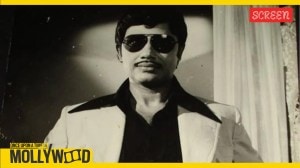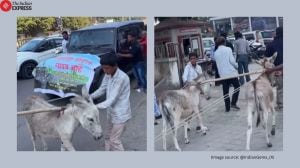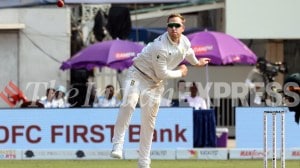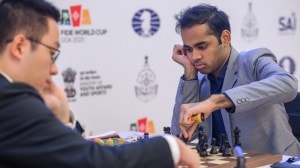Stand up for the truth of Jain’s findings
Immediately on reading the endeavours of The Indian Express to jumble the Jain Commission Report, I contacted retired Gen Amar S Kalkat, fo...

Immediately on reading the endeavours of The Indian Express to jumble the Jain Commission Report, I contacted retired Gen Amar S Kalkat, former Commanding General of the Indian Peace Keeping Force, and Gen (retd) RIS Kahlon, who, as Brigadier, was the Town Commandant in Jaffna. I wish the Express had done the same.
A motley collection of Sri Lankan LTTE activists and sympathisers had been rounded up in Tamil Nadu after the outbreak in October 1987 of hostilities between the LTTE and the IPKF. They were lodged in Tamil Nadu jails. In jail, the LTTE provoked hunger strikes, suborned jail wardens and the police, and resorted to a number of undesirable activities. It was, therefore, decided to fly the whole lot out from custody in Tamil Nadu to IPKF custody in Jaffna. Gen Kalkat says, "This allegation of letting them loose is totally wrong."
The detainees were flown from Chennai to the Palaly air base in Jaffna, then under the control of the IPKF. From the air base, all the detainees were transferred together to the detention centre which the IPKF had organised near the cement factory at Kankesanthurai. Gen Kahlon says that this detention centre had been organised to hold "all those apprehended by the IPKF in Jaffna". The detainees flown in from Tamil Nadu were held in the same detention centre.
Gen Kalkat explains that all those held in the Kankesanthurai detention centre, whether apprehended in Jaffna or flown in from Tamil Nadu, were interrogated and their personal and family background investigated by the Army Intelligence with local sources. The detainees were categorised in three groups; white, grey and black. Those detainees categorised as white after due interrogation and investigation, were released after the IPKF was satisfied that they were not likely to associate themselves with the militants. Gen Kalkat adds,"As far as I recall, no one amongst those flown in from Tamil Nadu was released; even if one or two out of them were released subsequently it would have been after their categorization as white’ who would not constitute any threat to the IPKF." Gen Kalkat is categoric that those detainees in the Kankesanthurai detention centre who were "categorised as grey and black were handed over only after we (IPKF) left Sri Lanka."
The logic behind this ongoing process of categorisation and re-categorisation was that, at the time, the Provincial Council for the North East was under the control of the duly elected EPRLF Chief Minister, Varadaraja Perumal. Therefore, as a matter of policy, we were attempting to encourage as many Sri Lankan Tamils as possible to "join the mainstream of public life," as Gen Kalkat puts it.
The exception to this general rule was the LTTE activist, Kittu, and his girl friend Cynthia. Civil intelligence reports indicated that Kittu was inclined to sue for peace. It was, therefore, decided to take the gamble of having him returned to Vadamarachi to establish contact with Prabhakaran so that Prabhakaran could be sounded about the possibility of calling off hostilities. Also, there was grave concern conveyed through the Citizens’ Committee of Jaffna that other militant groups might attempt to assassinate Kittu while under IPKF detention. Gen Kahlon says, "I was given special instructions that Kittu with Cynthia are to be released to the Citizens’ Committee, and that I should orchestrate this as best as I could."
The release of Kittu and Cynthia was done publicly at the Jaffna hospital. There was nothing clandestine about the release. It was publicised through the media and generally known. It is completely misleading, and even dishonest, to portray the open and public release of two of the detainees as the mass release of some 150 LTTE activists and sympathisers flown from captivity in India to liberty in Sri Lanka.
The attempt to do this was first made by VP Singh during his deposition before the Jain Commission. At that time itself, I had spoken to both Gen Kalkat and Gen Kahlon. The clarifications they gave me were conveyed by me to the Jain Commission in open hearings in the course of my deposition a year ago, in December 1996. I was cross-examined at length by VP Singh’s learned counsel, the very able Raian Kajranwala. While his cross examination covered virtually every point of my examination-in-chief, he did not challenge the facts conveyed by me to the Commission. It is tragic that The Indian Express should now attempt to flog this very dead horse.
As for the allegations in the Express about training to Sri Lankan Tamil militants, I was the head of the UN division of the Ministry of External Affairs from August 1983 to August 1984, the most intensive period of the propaganda war unleashed against India in the United Nations by the Sri Lankan Government. The allegations now being recycled by the Express were all levelled against us repeatedly in the UN General Assembly, the Human Rights Commission and the Sub Commission on Human Rights. The international community refused to give any credence to these bogus allegations. Justice Jain notes that "on a specific question posed to Shri P Chidambaram, who was intimately connected with the issue of Sri Lankan Tamils, by the Counsel for the Commission, Shri Chidambaram stated that he was not aware of any training imparted to the Sri Lankan Tamil militants by the Indian Army." Justice Jain, after carefully weighing all the evidence before him with regard to such training as was imparted to the Sri Lankan Tamil militants, comes to the following definitive conclusion: "Evidence available before the Commission indicates that the training was essentially for self-defence and not for launching military operations." Both quotations are from Volume VII and can be seen at pages 915 and 916. On the next page, Justice Jain has considered the evidence of training received by the LTTE from "organisations such as the PLO and MOSSAD", the "stockpiling of arms from the international market", the LTTE’s "fleet of smuggling vessels" and training in foreign countries in "wireless communications" and even "microlite aircrafts". Justice Jain concludes that it is "this highly specialised guerrilla training which the LTTE cadres had undergone in foreign terrorists outfits which made the LTTE a formidable enemy of the IPKF."
What does the Express gain from rediscovering the 14-year-old lies of the Jayawardene Government rather than standing up for the truth of the Jain Commission’s findings?
Coomi Kapoor replies:
Mani Shankar Aiyar has not denied the fact that the Rajiv Gandhi Government released 142 LTTE detainees from jails in Tamil Nadu and sent them to Jaffna. He has simply given a lengthy rationalisation. If the prisoners were creating problems in jails in peaceful Tamil Nadu, surely it made little sense to fly them all the way to Jaffna to be looked after by the already over-burdened Indian army fighting a guerrilla war in Sri Lanka against the LTTE. Incidentally, the prisoners were arrested in 1988 during President’s Rule in Tamil Nadu and not 1987.
"The 14-year-old lies" as Aiyar refers to the training of Tamil militants by the Indian Government is corroborated by the Director General of Police (Intelligence), Tamil Nadu, in an official letter, which is included in the report.
Aiyar’s faith in Justice Jain is touching. Part three of the series will provide some further insight on Justice Jain’s findings that Aiyar might find interesting.





- 01
- 02
- 03
- 04
- 05


























